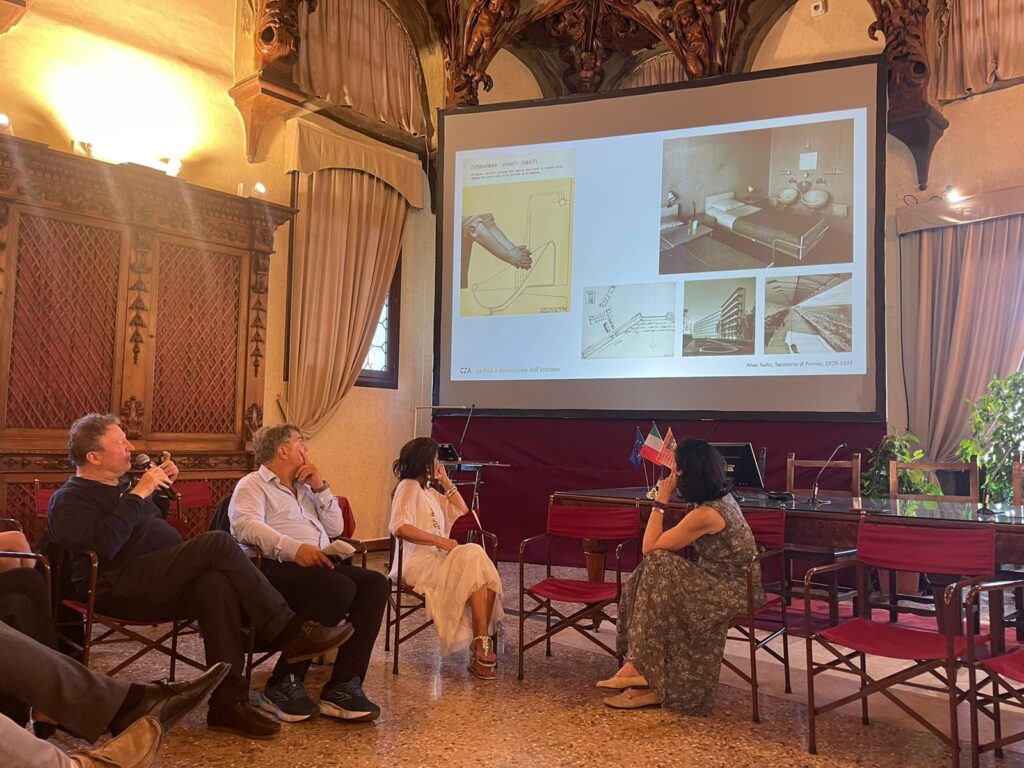Optimising Nursing Homes for the Elderly
Strategies to encourage and maintain independence
Friday 5 July, 19.00
The RSA or Residenza Sanitaria Assistenziale (Residential Health Care Facility), introduced in Italy in the mid-1990s as an out-of-hospital facility for the elderly, has over time turned out to be a hospice for all intents and purposes, where, in the best case scenario, those who enter on their own two feet no longer walk or, in the worst case scenario, die within a very short time. It is well known that RSAs are facilities where nobody wants to go. While we can look at the foreign model, which envisages a complex of support structures, with varying degrees of self-sufficiency and relative assistance, the Italian health proposal is to create a single structure that facilitates not so much the movement of the elderly, but that of health workers who, at a time of staff shortages, have to move around, strengthening the staff especially where there is no self-sufficiency. Starting from the principle that if the facility supports the staff, the staff better supports the patients, the RSAs must become something attractive to the elderly who will want to go there of their own free will. To this end, in addition to creating flexible and open spaces where people can socialise or retreat, allowing for supervision by reduced staff, the architecture will also have to provide for the reception of family members, allowing them to live with their elderly. In the future, however, through home care, the RSA will play the role of active director at a distance, allowing patients to continue living at home, coordinated and cared for in a different way than a carer who is often not a professional figure.

SPEAKERS
Giorgia De Zottis is a geriatric doctor geriatrician at the Azienda ULSS 3 Serenissima Districts 3 Dolo-Mirano and 4 Chioggia, Head of the UOS Non-Self-Sufficient Elderly and Deputy Director of the UOC Disability and Non-Self-Sufficiency in the same area. She deals with clinical assessments (for people with dementia and serious non-self-sufficiency due to neurodegenerative disease and/or outcomes of serious myelo-cerebrolesions), assessments for civil disability, prescription of aids assistance to non-self-sufficient elderly people. A lecturer on the Master in Architettura e Salute, she was the sole contact for the Elderly Service Centres in relations with the SISP and the Social-Health Management during the Covid-19 Emergency. She participates in the Working Table in the Free Programme “Counteracting the Determinants of Chronicity” of the Annual Prevention Plan 2020-2025.
Maurizio Striolo is the founder of Studio Striolo, Fochesato & Partners. An excellent connoisseur of the Veneto region, a member of numerous Building Commissions, as well as a member of the Environmental Heritage Commission of the Province of Padua, he has been practicing as a free-lance professional since 1980, dealing with urban planning, design of hydraulic and architectural works, both public and private. In the healthcare sector, he has to his credit the construction of several hospital facilities for public and private entities and more than 20 RSAs, designed with the challenge and ambition to help the elderly with architecture that supports them in prolonging their self-sufficiency despite the difficulties related to limited funding and staff shortages.
Patrich Villa has a solid and decades-long experience in the Ascom technological field with a constant focus on innovation in the healthcare sector and beyond.
Cino Zucchi is a full professor of Architectural and Urban Composition and a PhD professor in Architectural and Urban Design at the Polytechnic of Milan. Author of numerous articles and books on the history and theory of architecture, he has participated in various editions of the Milan Triennale and the Venice Architecture Biennale. He was the curator of the Italian Pavilion at the 14th edition (Biennale Architettura 2014), president of the jury of the Mies van der Rohe Award 2015 and is a member of the international ARE_Living team on the theme of living innovation. As an architect he has designed numerous buildings, most recently an RSA in Riva del Garda (Brescia).
Massimo Zuin is the Director of Social Health Services at the Ulss3 Serenissima and the creator, together with Caterina Frisone, of the series of panel discussions “Architecture and Healthcare, synergies and exchanges”. In charge of the entire Ulss3 area, he participates, together with the General Manager who is responsible for it, in the management of the local health service and in particular in the performance of the planning, allocation and commissioning function. Lecturer in the master’s course on territorial socio-health and social programming, he contributes to the strategic planning process, providing mandatory opinions relating to matters within its competence.
